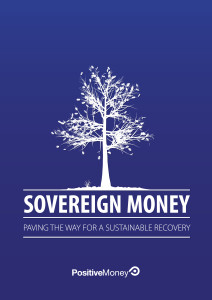
‘The comedian Russell Brand has stirred debate with his talk of revolution. Russell Brand is more right than wrong. Pre-revolutionary grievances are simmering in half the world, openly in France and Italy, less openly in Russia and China”, reads the article in the Telegraph of 21st November 2013 entitled “There is talk of revolution in the air” by Ambrose Evans-Pritchard, International Business Editor.
He explains that the income inequality has been rising for 25 years almost everywhere:
“the income share of the richest 1pc of Americans reached a record 19.6pc last year. It never rose above 10pc for the whole post-War era until the mid-1980s.”
and argues that:
“quantitative easing as conducted in the rich countries risks making matters worse. The money is leaking into asset booms, without much economic trickle down.”
Instead of Quantitative Easing he offers an alternative :
Rather than relying on more bond purchases, the stimulus could be injected into the veins of the economy, or into the “income stream”
“We can spend it on roads, railways, smart electricity grids, or anything we want,” said Lord Turner, ex-chief of the Financial Services Authority. “Or we can cut taxes, targeting employers’ national insurance so that it creates jobs here and does not leak out.”
You can read the whole article hereThese ideas are very similar to what Positive Money is advocating in the most recent publication Sovereign Money Creation: Paving the Way for a Sustainable Recovery.

Sovereign Money Creation (SMC) offers a way to make the recovery sustainable. In a similar way to Quantitative Easing, SMC relies on the state creating money and putting this money into the economy. But whereas QE relied on flooding financial markets and hoping that some of this money would ‘trickle down’ to the real economy, SMC works by injecting new money directly into the real economy, via government spending, tax cuts or rebates. Our analysis shows that by getting spending power directly into the hands of the public, this new solution could be up to 37 times more effective than Quantitative Easing in boosting GDP.
The pivotal advantage of SMC is that unlike the Government’s current growth strategies – which all rely on an over-indebted household sector going even further into debt – SMC requires no increase in either household debt or Government debt. In fact, SMC can actually reduce the overall levels of household debt. It would also make banks more liquid and the economy fundamentally safer.
Similar ideas have recently been proposed by Lord Adair Turner, under the name Overt Money Finance. The March 2013 budget included a review of the monetary policy framework, which expressly permitted the Bank of England to use ‘unconventional policy instruments’ to support the government’s objectives for growth and employment, meaning that SMC could be used within the current operating framework.
Download Here (Free, PDF, 60 pages)
No comments:
Post a Comment